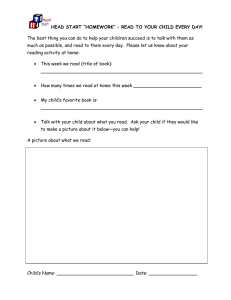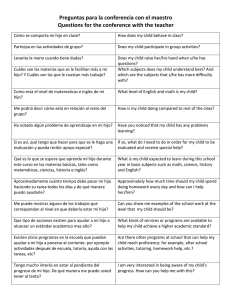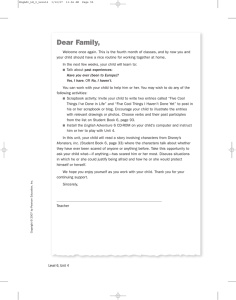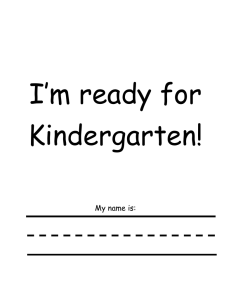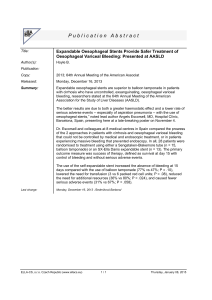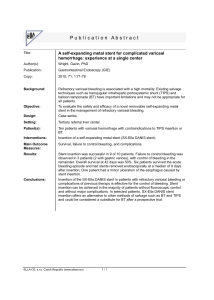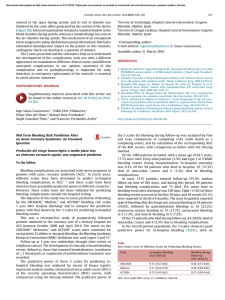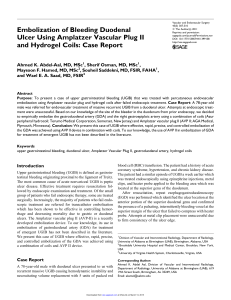Extracción de los dientes de leche: instrucciones
Anuncio
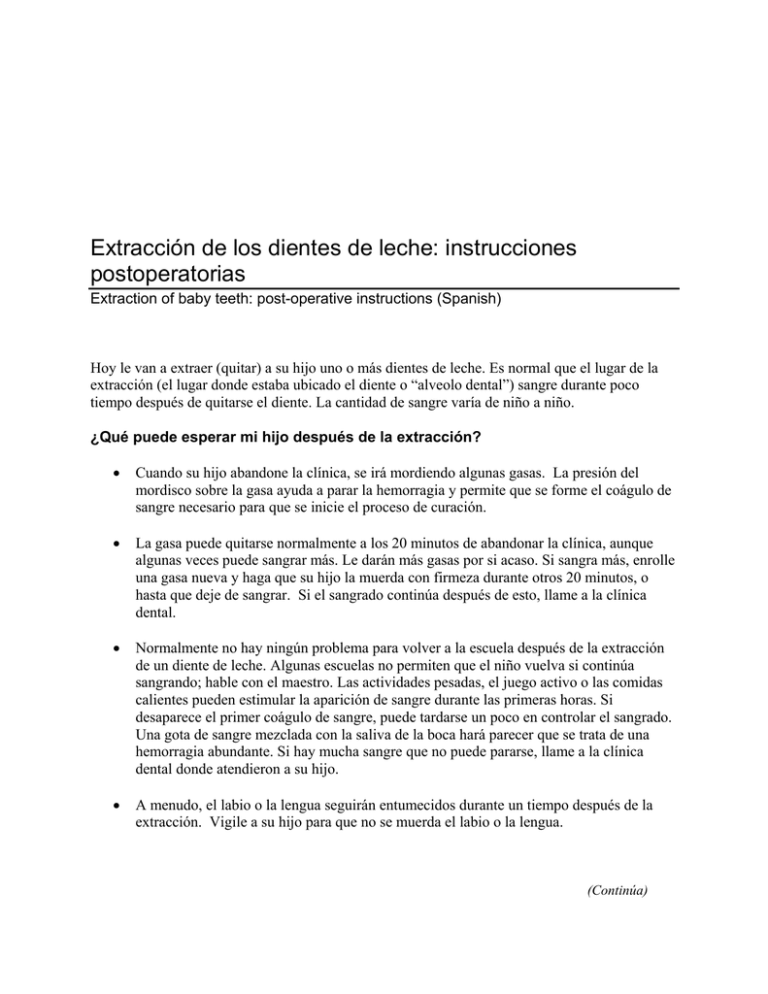
Extracción de los dientes de leche: instrucciones postoperatorias Extraction of baby teeth: post-operative instructions (Spanish) Hoy le van a extraer (quitar) a su hijo uno o más dientes de leche. Es normal que el lugar de la extracción (el lugar donde estaba ubicado el diente o “alveolo dental”) sangre durante poco tiempo después de quitarse el diente. La cantidad de sangre varía de niño a niño. ¿Qué puede esperar mi hijo después de la extracción? • Cuando su hijo abandone la clínica, se irá mordiendo algunas gasas. La presión del mordisco sobre la gasa ayuda a parar la hemorragia y permite que se forme el coágulo de sangre necesario para que se inicie el proceso de curación. • La gasa puede quitarse normalmente a los 20 minutos de abandonar la clínica, aunque algunas veces puede sangrar más. Le darán más gasas por si acaso. Si sangra más, enrolle una gasa nueva y haga que su hijo la muerda con firmeza durante otros 20 minutos, o hasta que deje de sangrar. Si el sangrado continúa después de esto, llame a la clínica dental. • Normalmente no hay ningún problema para volver a la escuela después de la extracción de un diente de leche. Algunas escuelas no permiten que el niño vuelva si continúa sangrando; hable con el maestro. Las actividades pesadas, el juego activo o las comidas calientes pueden estimular la aparición de sangre durante las primeras horas. Si desaparece el primer coágulo de sangre, puede tardarse un poco en controlar el sangrado. Una gota de sangre mezclada con la saliva de la boca hará parecer que se trata de una hemorragia abundante. Si hay mucha sangre que no puede pararse, llame a la clínica dental donde atendieron a su hijo. • A menudo, el labio o la lengua seguirán entumecidos durante un tiempo después de la extracción. Vigile a su hijo para que no se muerda el labio o la lengua. (Continúa) ¿Cómo puedo cuidar la boca de mi hijo? • Normalmente, usted no tiene que hacer nada especial cuando se extrae un diente de leche. • Su hijo deberá poder comer y beber sin ningún problema. Si su hijo tiene miedo de que le duela cuando coma, haga que mastique con el lado opuesto al del diente extraído. • No cepille sobre el sitio de la extracción durante tres días. Limpie el área enjuagándola; puede usar una bolita de algodón para limpiar el área. • La encía del diente extraído puede estar sensible, de modo que usted y su hijo deben tener cuidado al cepillar los otros dientes próximos a esta área. Si el área se cepilla, no se sorprenda de que sangre un poco, en cuyo caso se detendrá rápidamente. ¿Qué deberé hacer en caso de una emergencia? Llame a la clínica dental si tiene alguna pregunta o preocupación. © 2001-7 HealthPartners 10-07/X/052075 Extraction of baby teeth Post-operative instructions Today your child had a baby tooth or teeth extracted (removed). It is normal for the extraction site (the place where the tooth used to be or the “tooth socket”) to bleed for a short time after the removal of a tooth. The amount will vary from child to child. What can my child expect after the extraction? • When your child leaves the dental clinic, he will be biting on some gauze squares. The pressure from biting on the gauze helps to stop the bleeding and lets a blood clot form that’s needed to start the healing process. • The gauze can usually be removed within 20 minutes after leaving the clinic — but sometimes there is more bleeding or oozing. You will be supplied with some extra gauze just in case. If more bleeding occurs, roll the extra gauze and have your child bite down firmly for another 20 minutes, or until the bleeding has stopped. If the bleeding continues after this, call your dental clinic. • There is usually no problem in returning to school after the extraction of a baby tooth. Some schools may not let you return to school if there is bleeding in the mouth. Check with the teacher. Heavy activity, active play or very hot foods may promote bleeding during the first few hours. If the initial blood clot is lost, it may take some time to control the oozing. One drop of blood mixed with a mouthful of saliva will appear as though bleeding is heavy. If there is a lot of bleeding that can’t be stopped, call the dental clinic where your child was seen. • Often times the lip or tongue will remain numb for a period of time after the extraction. Please observe your child so that he does not bite his lip or tongue. How should I care for my child’s mouth? • You usually do not have to do anything extra special when a baby tooth is extracted. • Your child should be able to eat and drink without a problem. If your child is afraid there may be pain when she eats, have her chew on the opposite side of where the tooth was removed from. • Do not brush over the extraction site for three days. Clean the area by rinsing and you can use a cotton swab to clean the area. • The gum where the tooth was may be tender so you and your child should be careful when brushing the other teeth near this area. If the area gets brushed, don’t be surprised if some bleeding occurs. It should stop quickly. What should I do in case of an emergency? • Call your dental clinic if you have questions or concerns. © 2001-7 HealthPartners 10-07/X/120153
